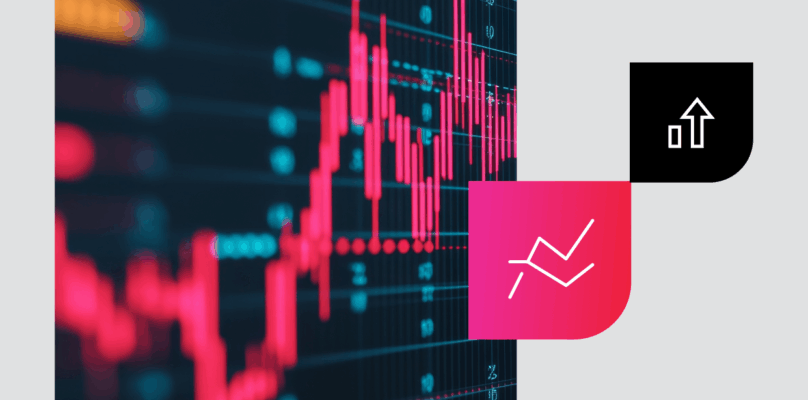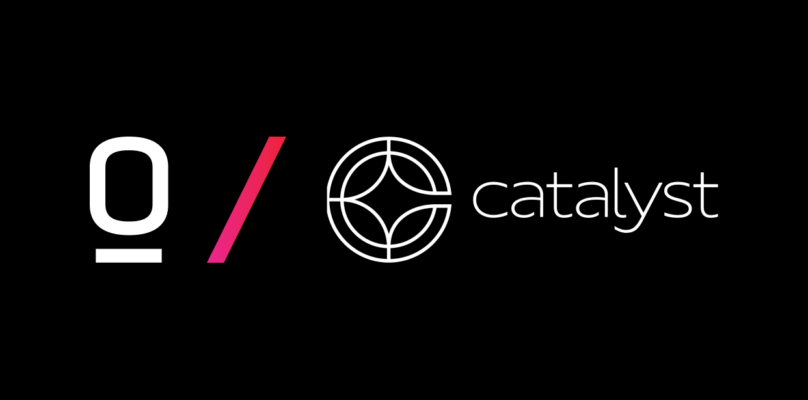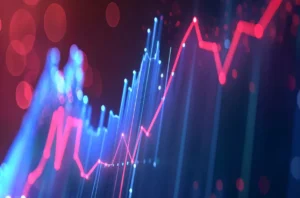For two years, financial institution executives have warily watched the economy as it has suffered setbacks directly and indirectly caused by the global pandemic. Stay-at-home orders, shutdowns of “non-essential” businesses, mass layoffs, supply chain issues are a few of the major hurdles we have endured.
So, is it counter-intuitive in May 2022 to say the economy has rebounded enough to lead to a recession? According to renowned economist Elliot Eisenberg, that is a possibility.
Eisenberg, Chief Economist for GraphsandLaughs, LLC, and frequent speaker at industry events gave an update on the economy during the Economic and Lending Trends webcast hosted by Origence on May 5.
The problem, Eisenberg explained, is underlying growth is actually “too strong,” which is why the Fed recently began to raise short-term interest rates.
Unlike most recessions, the one triggered in spring 2020 by COVID-19 was remarkably short, Eisenberg noted. Retail sales paused only for a few months, compared to nearly a decade for demand to recover after the housing crisis recession of 2008-2009.
“Inflationary pressures are very strong,” he told the webinar audience. “Retail spending is slowly returning to normal, but the combination of the Omicron variant, less federal money, inflation and Russia’s attack on Ukraine, is having an effect on consumer confidence. The University of Michigan Index shows a potential for recession.”
Strength of the auto market
Tony Boutelle, president and CEO of Origence, introduced Eisenberg by noting March and April were two of the best months in Origence history, even with a shortage of cars for sale.
Credit unions using the CUDL Network remain the largest auto lender in the nation as an aggregate, experiencing 16.3 percent loan growth through February, according to data from AutoCount. CUDL credit unions funded $12.7 billion in auto loans in the first quarter of 2022, with used vehicles comprising 76 percent of all cars financed through the CUDL system year to date. The CUDL Network includes 1,140 credit unions and 16,000 auto dealers nationwide.
“New car production is estimated at 15.3 million units for 2022, lower than the 17 million pre-COVID,” Boutelle said.
Eisenberg estimated 2023 will see a similar low total of new auto production. As such, he predicted residuals on used autos “eventually will fall, but not right away.”
According to Cox Automotive, wholesale used vehicle prices (on a mix-, mileage- and seasonally adjusted basis) declined 1.0 percent in April from March. The non-adjusted price change in April was an increase of 2.9 percent compared to March, leaving the unadjusted average price up 16.4 percent year over year.
A bounce-back for personal consumption expenditures
Real personal consumption expenditures have “bounced back and now are on trend” despite supply chain struggles, Eisenberg advised. He reported there is a great deal of pent-up demand not only for some consumer goods, but also for experiential items such as concert tickets, because people want to get out and about again.
The inventory-to-sales ratio remains low, but Eisenberg said if not for Russia’s invasion of Ukraine and the Chinese lockdown for COVID, supply chains might have recovered by now.
“Manufacturing numbers are soft, but okay. Small business optimism is at 93.2, a bit low,” he assessed. “This is not the ideal time for the Fed to raise rates, due to stress on the economy and low consumer confidence, but it has no choice. People hate inflation, so the Fed has to come down hard on it.”
Signs of a return to “normal”
“Despite the negativity, capacity utilization rates are recovering. Workers and firms are figuring out how to live with COVID and how to deal with supply chain issues. Corporate profits are at the highest nominal level ever, but I expect this to slow soon,” he offered. “The stock market has been doing okay despite numerous stressors, though it has been choppy lately.”
Household savings rates are “normalizing” as enhanced unemployment benefits and fiscal stimulus fade. Household balance sheets have recovered trillions in net worth. Bankruptcy rates are remarkably low but eventually will go back up, Eisenberg noted.
“COVID has forced many changes to our economy, but eventually there will be a return to normal,” he counseled.
The yield curve is flat due to rising inflation and rising short-term rates along with slowing growth. The Fed’s rate increase program may cause the yield curve to invert – possibly some time in 2023.
“Fiscal policy was very stimulative for a long time, as the U.S. government spent historic sums to support the economy,” he said. “The withdrawal of this support will create an unusually large fiscal cliff, which undoubtedly will have an impact on GDP. By the end of 2023, GDP is expected to be just 2 percent, meaning the Fed might have to start bringing rates back down, or at least stop raising them.”
It will be “very difficult” for the Fed to bring about a soft landing – meaning there likely will be a recession in the near future, most likely in 2023, Eisenberg estimated.
Labor market performance
One of the biggest recession triggers to watch in the months ahead is the labor market. Eisenberg said unemployment is down to 3.6 percent, which he termed a “remarkable recovery from COVID.” The labor force participation rate is steadily improving, despite a large number of retirements.
“All these factors mean there are 1.8 jobs per person – a profoundly tight labor market,” Eisenberg declared. “Worker quit rates have skyrocketed, which is causing wage inflation. People who quit and get a new job make 2 percent to 3 percent more than job stayers. This combination of wage inflation and goods inflation is what the Fed is having to defeat.”
Fed Funds rate just went to 0.375 percent on May 4. In June, and Eisenberg expects another half-point raise, followed by quarter-point raises later this year.
“2022 will be a solid year. The Fed will keep raising rates every six weeks until inflation cracks. Inflation will peak this quarter –– but the question is how fast it will come down. If it drops precipitously and wage inflation slows, then the economy might avoid recession because the Fed can stop raising rates.”














